Art of a Pastry Chef 1 Peter Sandberg
Will Hays and "Pre-Code" Hollywood (Fake News: Fact-Checking Hollywood Babylon Episode 7) /

Listen to this episode on Apple tree Podcasts.
Who was Will Hays, and how did he come up to put his name on the censorship "Code" that would shape the content of movies more than whatsoever other single force from the early 1930s into the 1960s? How much power did Hays really have in 1920s Hollywood, how corrupt was he, and why did it take a decade before the Hays Code was fully enforced?
Prove NOTES:
Sources:
This episode is a response to, and includes a brief excerpt from, Hollywood Babylon by Kenneth Anger.
The Memoirs of Volition H. Hays by Will H. Hays
Tinseltown: Murder, Morphine, and Madness at the Dawn of Hollywood by William J. Mann
Go West Young Women! by Hillary Hallett
Hollywood's Censor: Joseph I. Breen and the Production Lawmaking Assistants past Thomas Doherty
Only Yesterday: An Breezy History of the 1920s by Frederick Lewis Allen
"Will Hays, First Film Czar, Dies; Onetime G. O. P. Leader Was 74; Czar of Hollywood's Morals 23 Years Was Postmaster Full general Under Harding" By The Associated Printing, March 8,1954, New York Times
"Volition H. Hays and the Motion Moving picture Industry 1919-1922: past Gerald S. Schatz, from The Historical Society of Southern California Quarterly, Vol. 43, No. iii, September 1961, pp. 316-329
"Volition H. Hays Gets Divorce in Indiana; Court Awards Custody of Son to Moving-picture show Official in Uncontested Suit." New York Times, June 22, 1929
"Mrs. Will H. Hays Dies; Widow of Former 'Czar' of Flick Industry Was 84" New York Times, August 30, 1960
"The Letters That Warren G. Harding's Family Didn't Want You to Meet" by Past Hashemite kingdom of jordan Michael Smith, New York Times, July 7, 2014
"Pictures More Realistic" The Brooklyn Daily Hawkeye, March 31, 1930
"Morals and the Movies" The News Leader, April 28, 1930
"America's Horniest President Warren G. Harding might take been a useless leader, but he sure could craft a sexual practice scandal" By Jordan Michael Smith, August 16, 2015

William Hays (heart) shaking hands, c. 1920's
Music:
Original music was composed for this episode by Evan Viola. Near of the remainder of the music used in this episode, with the exception of the intro and outro, was sourced from royalty-gratuitous music libraries and licensed music collections. The intro includes a clip from the moving-picture show Casablanca. The outro song this week is "Chinese Bakery" by The Auteurs.
Excerpts from the following songs were used throughout the episode:
he Smoke Room - Gunnar Johnsen
My Simple Thing 2 - Peter Sandberg
The Hipcat Swagger 3 - Martin Landh
Mississippi Constitutional 1 - Martin Gauffin
Sophisticated Gentlemen 3 - Magnus Ringblom
Loser - Anders Ekengren
Lodge Noir 4 - John Ahlin
March Militaire - Franz Schubert
Cluedo - Hakan Eriksson
Blackness and White Memories 3 - Martin Hall
War March 1 - Peter Sandberg
O Come up All Ye True-blue - Traditional

Credits:
Our special guest this week is Gideon Yago.
This episode was written, narrated and produced by Karina Longworth.
Editors: Sam Dingman and Jacob Smith.
Research and production assistant: Lindsey D. Schoenholtz.
Social media assistant: Brendan Whalen.
Logo blueprint: Teddy Blanks.

Hollywood Babylon Opening Montage Credits /
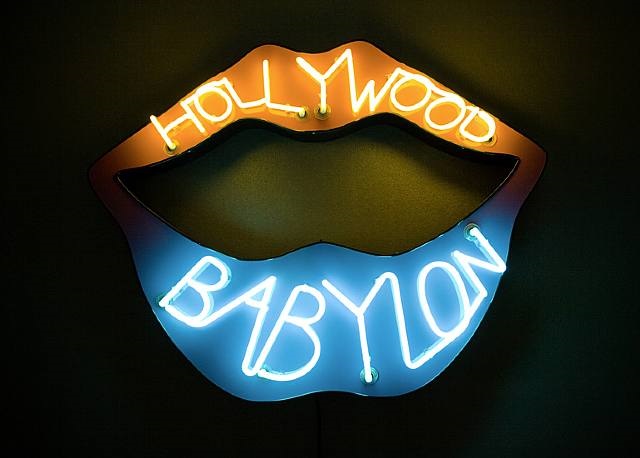
Our Hollywood Babylon series opening montage includes audio clips from diverse documentaries and television programs. Hither are the audio prune sources:
"The great films of the silent years..."
Orson Welles discussing the 1916 film Intolerance on the 1971 Television set series The Silent Years.
"This isn't news, this is totally unfounded gossip!"
Nigel Finch's Telly documentary series Loonshit, episode "Hollywood Babylon"
"It'south a long way from Hollywood..." and "Accept been criticized for dealing too bluntly with such themes as sex and nudity..."
1965 news report about "underground films" that mentions Anger'southward work.
"Hollywood" and "Babylon" are clips from various documentaries, exact sources unknown.
Wallace Reid (Fake News: Fact Checking Hollywood Babylon Episode 6) /

Listen to this episode on Apple Podcasts.
According to Hollywood Babylon, role player Wallace Reid —a morphine aficionado who died in an aviary at the age of 31—was the outset sacrificial lamb of the post-sandal era, and Reid's married woman, a quondam teen star named Dorothy Davenport, was the ultimate opportunistic hypocrite. What fabricated Reid'due south instance different from the other scandals around this fourth dimension? Was Davenport the blackness widow that Anger suggests, or should she be remembered every bit a pioneering female author, producer and director?

Wallace Reid and Dorothy Davenport with son Billy, 1917

Wallace Reid in The Dictator, 1922
Music:
Original music was equanimous for this episode by Evan Viola. Most of the rest of the music used in this episode, with the exception of the intro and outro, was sourced from royalty-free music libraries and licensed music collections. The intro includes a clip from the motion-picture show Casablanca. The outro song this week is "Professional person Widow" by Tori Amos.
Excerpts from the post-obit songs were used throughout the episode:
The Smoke Room - Gunnar Johnsen
Grit Bowl one - Hakan Eriksson
My Simple Matter 2 - Peter Sandberg
Music from The Nascency Of A Nation (1915) score by Joseph Carl Breil
Toreador Song - Georges Bizet (From Carmen)
Loser - Anders Ekengren
Quentino 9 Stefan Netsman
Bad news Piano 17 - Oscar Collin
Jazz and Blue Piano one - Jonaton Jarpehag
Xanthous Leaves 5 - Peter Sandberg
Sorry Pianoforte Walk one - Oscar Collin
Black and White - Magnus Ringblom Quartet
Meditation for Viola and Piano 14 - Jonaton Jarpehag
Widow's Dance - Hakan Eriksson
My Simple Affair iii - Peter Sandberg
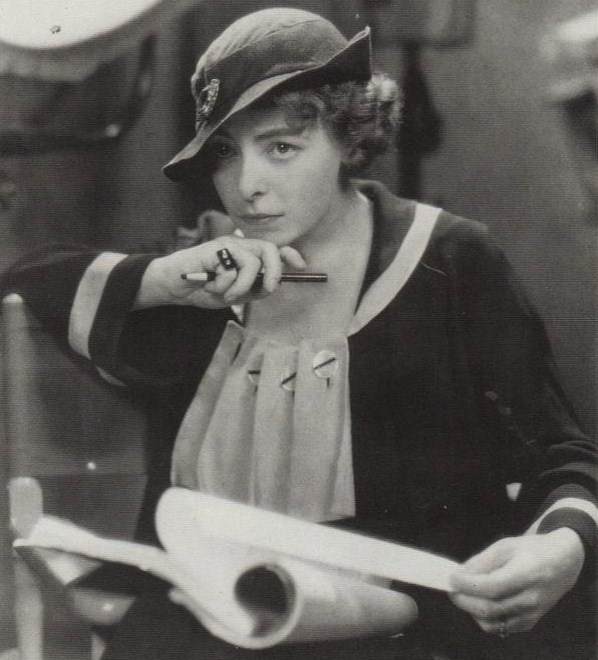
Davenport on the prepare of Human being Wreckage, 1923
Credits:
Our special guest this week is Marker Olsen.
This episode was written, narrated and produced past Karina Longworth.
Editors: Sam Dingman and Jacob Smith.
Research and production assistant: Lindsey D. Schoenholtz.
Social media assistant: Brendan Whalen.
Logo design: Teddy Blanks.

Mabel Normand (False News: Fact Checking Hollywood Babylon Episode 5) /
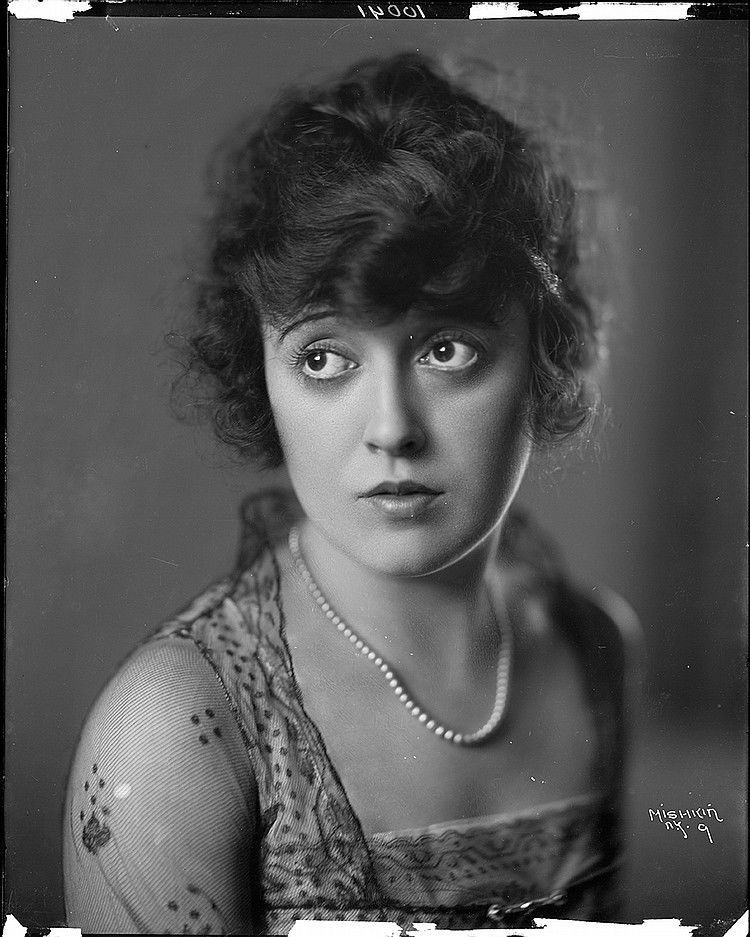

Mabel Normand, Roscoe 'Fatty' Arbuckle, Buster Keaton, c. 1915
Music:
Original music was composed for this episode by Evan Viola. About of the remainder of the music used in this episode, with the exception of the intro and outro, was sourced from royalty-free music libraries and licensed music collections. The intro includes a clip from the film Casablanca. The outro song this week is "Underground Movies" by The Auteurs.
Excerpts from the following songs were used throughout the episode:
The Smoke Room - Gunnar Johnsen
My Unproblematic Matter 3 - Peter Sandberg
Pesado Manouche 3 - John Ahlin
Mississippi Ramble 1 - Martin Gauffin
Kansas City Flashback ii - Magnus Ringblom
Ane 2 Three 1 - Peter Sandberg
Jazz and Blue Pianoforte 1 - Jonaton Jarpehag
Mickey (1918) - Harry Williams (lyrics) & Neil Moret (music)
Victoria's Vintage Pearls 2 - Peter Sandberg
Black and White - Magnus Ringblom Quartet
My Simple Thing - Peter Sandberg

Mack Sennett Studios
Credits:
Our special invitee this week is Fred Savage.
This episode was written, narrated and produced past edited by Karina Longworth.
Editors: Sam Dingman and Jacob Smith.
Enquiry and production assistant: Lindsey D. Schoenholtz.
Social media assistant: Brendan Whalen.
Logo design: Teddy Blanks.

William Desmond Taylor (Fake News: Fact Checking Hollywood Babylon Episode 4) /
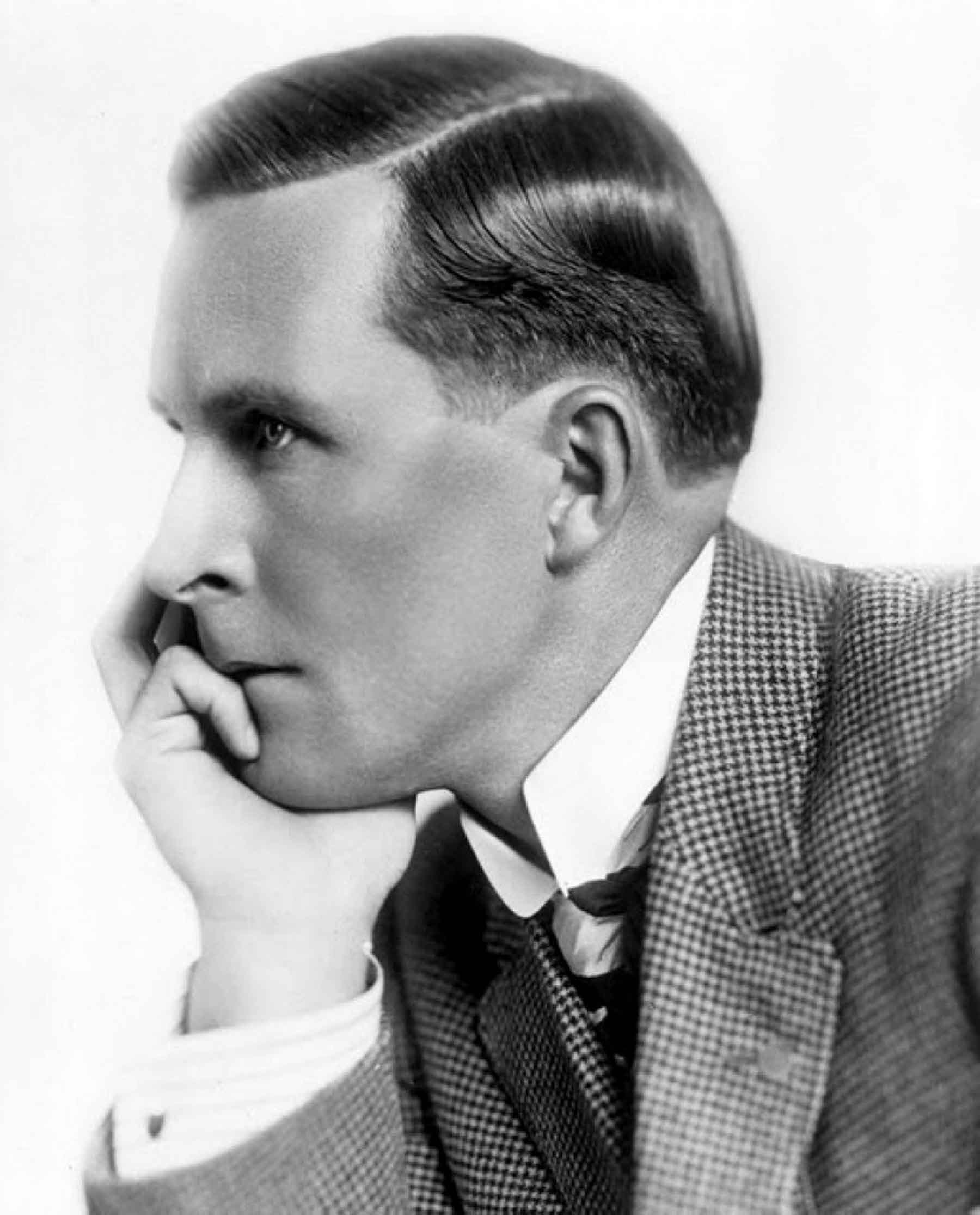
Listen to this episode on Apple tree Podcasts.
The killing of director William Desmond Taylor was the third in a trifecta of scandals which, over the course of about a year and a one-half, painted such a sordid a picture of the moving picture colony equally a hotbed of sin that the manufacture was forced to fundamentally change its way of conducting business. Anger's telling implies that Taylor's murder may have been a consequence of the diplomacy he supposedly conducted simultaneously with several women, including both a starlet and her mother, or related to the fact that Taylor was living under an assumed identity and employing his own brother as his butler. Today we'll sort out fact from fiction in the Taylor instance, and demonstrate how the media frenzy surrounding information technology had wide-ranging consequences despite the fact that no i was always arrested for the law-breaking.

Mary Miles Minter c. 1919
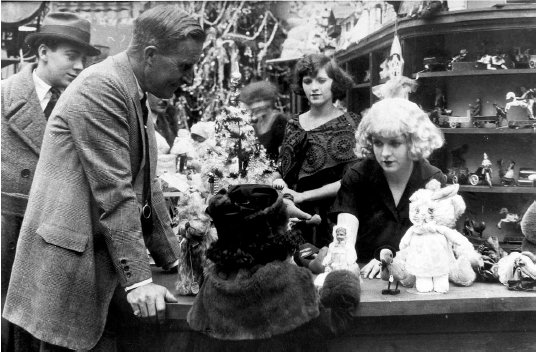
William Desmond Taylor directing May McAvoy in the silent pic Top of New York (1921), several months earlier his death
Music:
Original music was composed for this episode past Evan Viola. Virtually of the rest of the music used in this episode, with the exception of the intro and outro, was sourced from royalty-free music libraries and licensed music collections. The intro includes a clip from the film Casablanca. The outro vocal this week is "Brainchild" by The Auteurs.
Excerpts from the following songs were used throughout the episode:
The Smoke Room - Gunnar Johnsen
Sophisticated Gentlemen iii - Magnus Ringblom
My Elementary Thing 3 - Peter Sandberg
Bad News Piano 2 - Oscar Collin
Cluedo - Hakan Eriksson
Bad News Piano 17 - Oscar Collin
Blackness and White - Magnus Ringblom Quartet
Black and White Memories 3 - Martin Hall
Whiskey Rondo - Hakan Eriksson

Mabel Normand is questioned during the inquest surrounding William Desmond Taylor's death in 1922. (AP Photo)
Credits:
Our special invitee this week is Fred Savage.
This episode was written, narrated and produced by Karina Longworth.
Editors: Sam Dingman and Jacob Smith.
Research and production assistant: Lindsey D. Schoenholtz.
Social media assistant: Brendan Whalen.
Logo design: Teddy Blanks.

Roscoe "Fatty" Arbuckle and Virginia Rappe (Fake News: Fact Checking Hollywood Babylon Episode iii) /
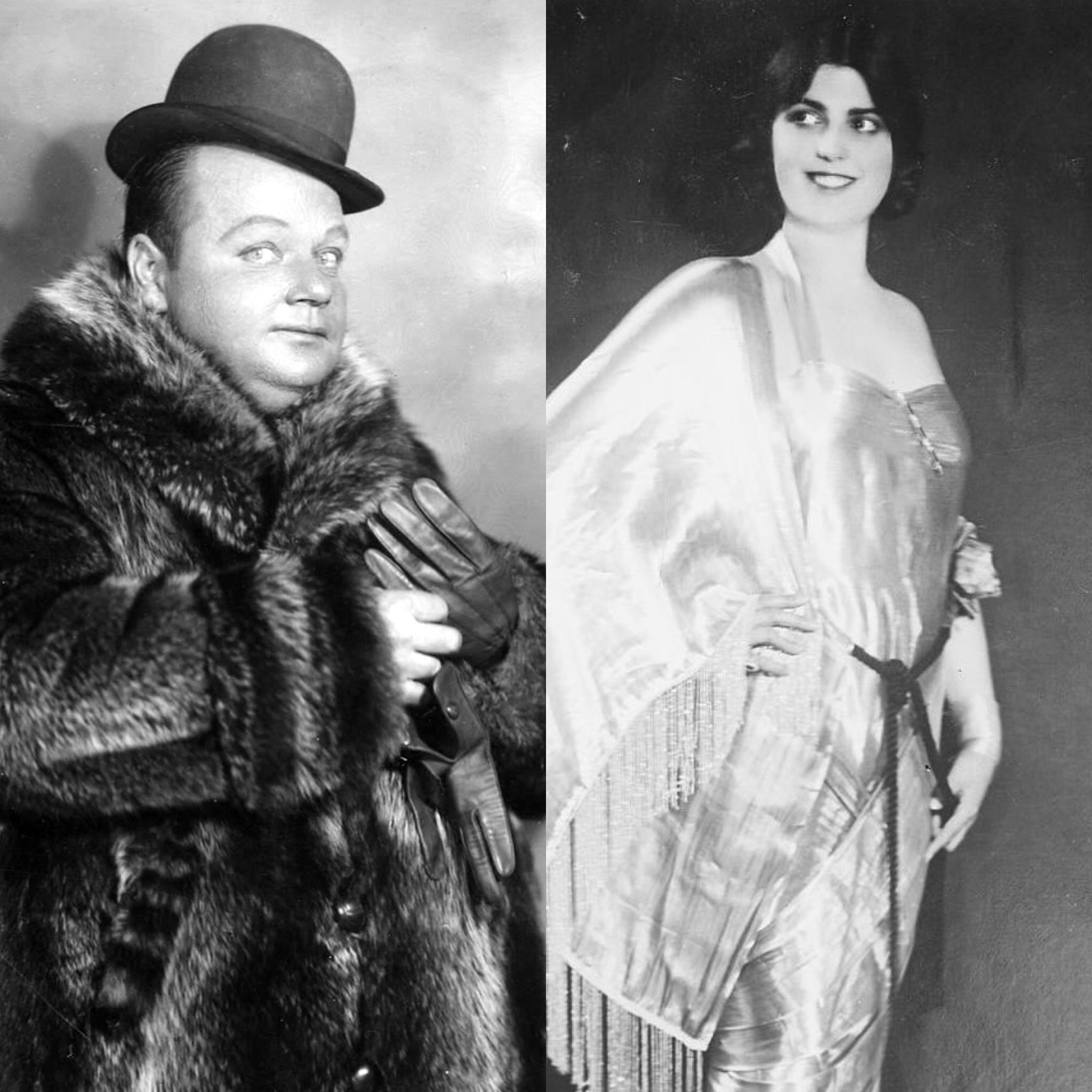
Heed to this episode on Apple Podcasts.
At a boozy party over Labor Day weekend 1921, Roscoe "Fat" Arbuckle, silent Hollywood'southward superstar plus-size comedian, followed erstwhile actress Virginia Rappe into a hotel room. They were alone together for only a few minutes, merely in that time, Rappe fell ill, and died several days afterwards from her sickness. Arbuckle was tried for murder, and accused of rape in the newspapers. The story of the definitive sex activity-and-decease scandal in early Hollywood history, which left a woman dead and finer killed off a star comedian'southward career, has been plagued with misinformation and distortions for near 100 years. Today we'll closely examine Acrimony's text to demonstrate how he implies both Arbuckle and Rappe's guilt, and nosotros'll also use more contempo scholarship on the case to attempt to suss out what really happened in that hotel room, and how the facts were distorted throughout Arbuckle's three trials.
This episode includes graphic descriptions of sexual violence.

Portrait of Roscoe 'Fatty' Arbuckle wearing a smoking jacket and surrounded by kneeling immature ladies, c. 1918
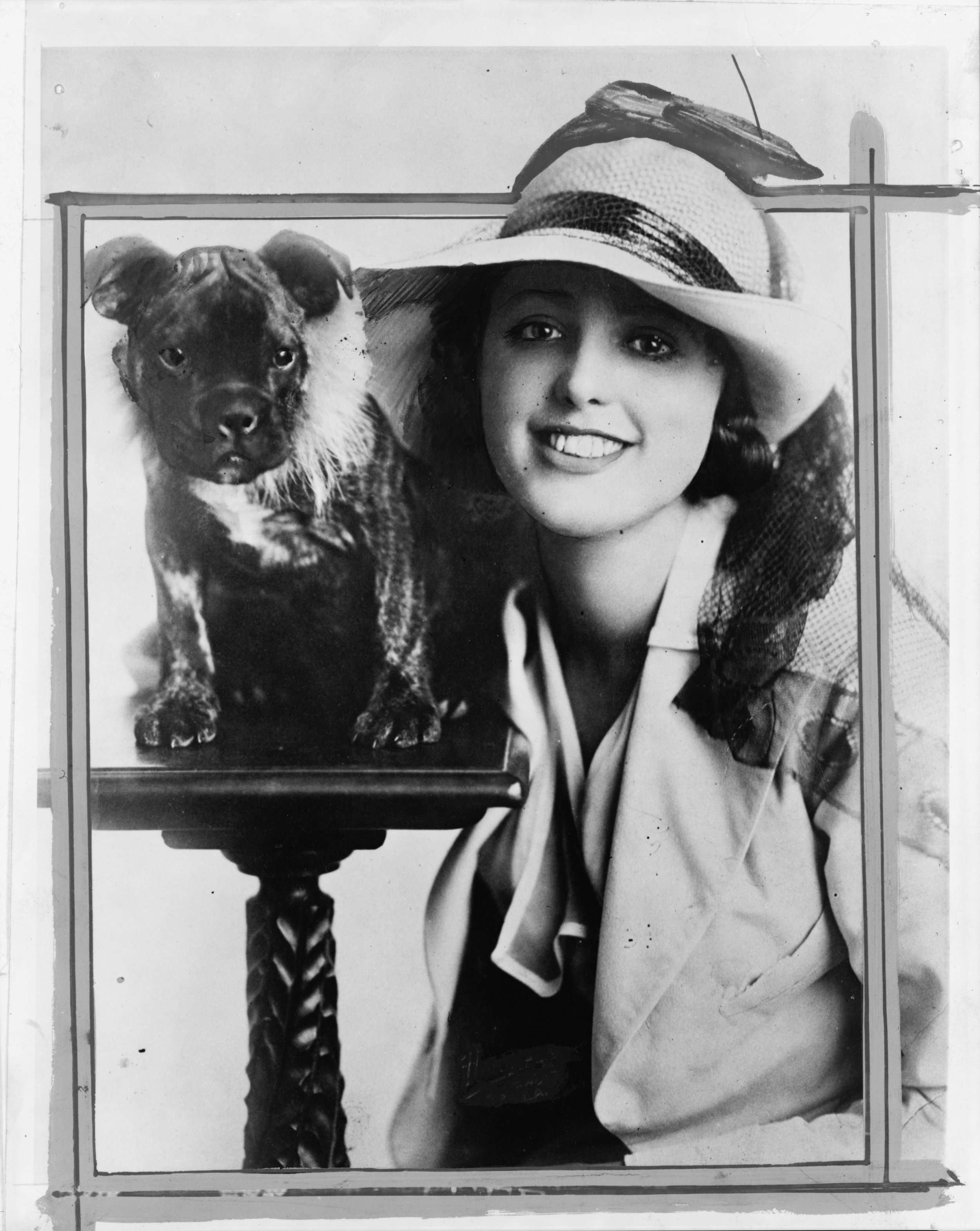
Virginia Rappe, c. 1920
SHOW NOTES:
Sources:
This episode is a response to, and includes a cursory extract from, Hollywood Babylon by Kenneth Anger.
Room 1219: The Life of Fatty Arbuckle, the Mysterious Death of Virginia Rappe, and the Scandal That Changed Hollywood by Greg Merritt
Go West, Young Women!: The Rise of Early Hollywood by Hilary Hallett
Tinseltown: Murder, Morphine, and Madness at the Dawn of Hollywood past William J. Mann
"Dead Actress Earned Fame every bit Fine art Model" San Francisco Relate, September eleven, 1921
"Fatty Arbuckle-Virginia Rappe Trial: Q&A with Researcher Joan Myers" by Andre Soares, www.altfg.com
"Arbuckle Gloomy as Physicians Testify", Sacramento Union, November nineteen, 1921

Trashed hotel suite at the St. Francis Hotel, 1921
Music:
Original music was composed for this episode by Evan Viola. Well-nigh of the residual of the music used in this episode, with the exception of the intro and outro, was sourced from royalty-free music libraries and licensed music collections. The intro includes a clip from the flick Casablanca. The outro song this calendar week is Modern History by The Auteurs.
Excerpts from the following songs were used throughout the episode:
The Smoke Room - Gunnar Johnsén
Widow's Trip the light fantastic - Håkan Eriksson
Sophisticated Gentlemen 3 - Magnus Ringblom
1920s Chicago three - Magnus Ringblom
Kansas City flashback 2 - Magnus Ringblom
Blue Zones - Martin Gauffin
The Old Firm - Håkan Eriksson
Bad News Piano 17 - Oscar Collin
Jazz and Blue Piano one - Jonaton Jarpehag
Bad News Piano three - Oscar Collin
Paris Waltz - Håkan Eriksson
Meditation for Viola and Piano 14 - Jonaton Jarpehag
My Uncomplicated Matter three - Peter Sandberg
Credits:
Our special guest this week is Gideon Yago.
This episode was written, narrated and produced by Karina Longworth.
Editors: Sam Dingman and Jacob Smith.
Research and production assistant: Lindsey D. Schoenholtz.
Social media assistant: Brendan Whalen.
Logo design: Teddy Blanks.

Arbuckle'due south Mug Shot 1921
Olive Thomas (Fake News: Fact Checking Hollywood Babylon Episode 2) /

Listen to this episode on Apple Podcasts.
The showtime Hollywood scandal to attract international intentional was the expiry-past-toxicant of Olive Thomas, the twenty-five year old star of au courant Hollywood striking The Flapper. According to Hollywood Babylon, Thomas's death was the suicide of a woman desperate over her failure to score dope for her junkie husband. What'due south the real story—and what role was played past Jack Pickford, Olive'due south husband and the brother of the extra then considered "America's Sweetheart"?
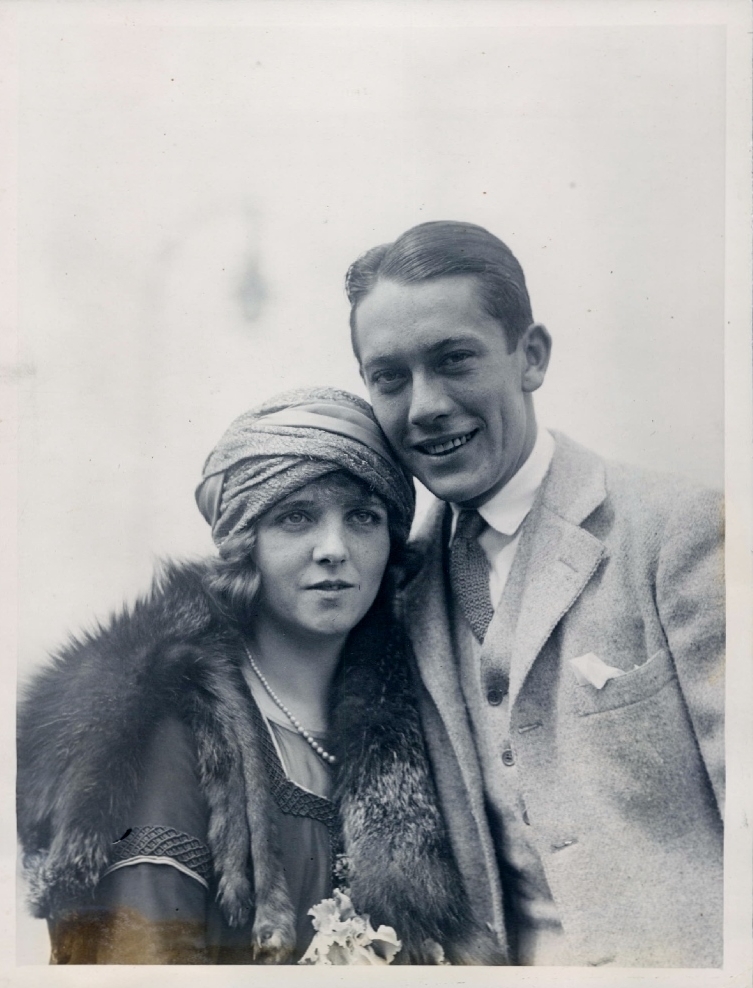
Olive Thomas and Jack Pickford, c. 1920

Special thank you to Allison Anders, who provided this paradigm of Pickford and Thomas from her personal collection.
Music:
Original music was composed for this episode by Evan Viola. Most of the remainder of music used in this episode, with the exception of the intro and outro, was sourced from royalty-complimentary music libraries and licensed music collections. The intro includes a clip from the film Casablanca. The outro vocal this week is "The Upper Classes" by The Auteurs.
Excerpts from the following songs were used throughout the episode:
The Fume Room - Gunnar Johnsén
Mississippi Ramble 1 - Martin Gauffin
Sophisticated Gentlemen three - Magnus Ringblom
1 Two Three 1 - Peter Sandberg
Black and White Memories 3 - Martin Hall
Speakeasy ii
1920s Chicago 3 - Magnus Ringblom
Time To Tango - Håkan Eriksson
Pesado Manouche 3 - John Ahlin
Widow'due south Trip the light fantastic toe - Håkan Eriksson
Paris Waltz - Håkan Eriksson
Say Information technology Is So -Magnus Ringblom
Victoria's Vintage Pearls 2 - Peter Sandberg
Jazz and Bluish Piano 1 - Jonaton Jarpehag
Credits:
Our special guest this week is Gideon Yago.
This episode was written, narrated and produced by Karina Longworth.
Editors: Sam Dingman and Jacob Smith.
Enquiry and production assistant: Lindsey D. Schoenholtz.
Social media assistant: Brendan Whalen.
Logo design: Teddy Blanks.
D.Due west. Griffith, the Gish Sisters and the origin of "Hollywood Babylon" (Simulated News: Fact Checking Hollywood Babylon Episode one) /

Listen to this episode on Apple tree Podcasts.
This flavour will interrogate a volume that is considered by many to be the urtext of salacious movieland gossip: Hollywood Babylon. Written past Kenneth Anger, a child actor turned director of experimental queer art films, Hollywood Babylon has been derided by some readers as a work of unsafe libel for its embellishments and, in some cases, outright fictions about real people and events. (Originally published in French republic in 1959, the book was not widely available in the United states of america until 1975). Others accept celebrated Anger's bitchy tome as the ultimate, camp trolling of the movie industry and all of its sordid hypocrisy and abuse. Over the class of a two-part season (with part one exploring the silent era and part two, to come up later in 2018, stretching from the 1930s into the late 1960s), we will examine some of the stories Anger tells and the way he tells them, and we'll effort to effigy out the real story. Throughout, we'll talk nigh how the seemingly gimmicky concept of "simulated news" has played a fundamental role in Hollywood's star-making (and star-destroying) apparatus from the industry's primeval days, and how such practices mutated through the work of counter-narrators like Anger and beyond.
The phrase "Hollywood Babylon" entered the colloquial thank you to D.Westward. Griffith, 1 of Hollywood's first nifty directors, who followed up the racist smash The Nativity of a Nation with a less-successful historical epic called Intolerance. Anger'due south use of that film's Babylon set, which was left to stand and decay for years later the flick came and went, as the structuring image of his gossip bible, helps to set the ironic tone of the book. Simply what of Anger'south accusations that Griffith was a known pedophile, and that his stars, sisters Dorothy and Lillian Gish, were incestuous?

D.W. Griffith on set, c. 1918
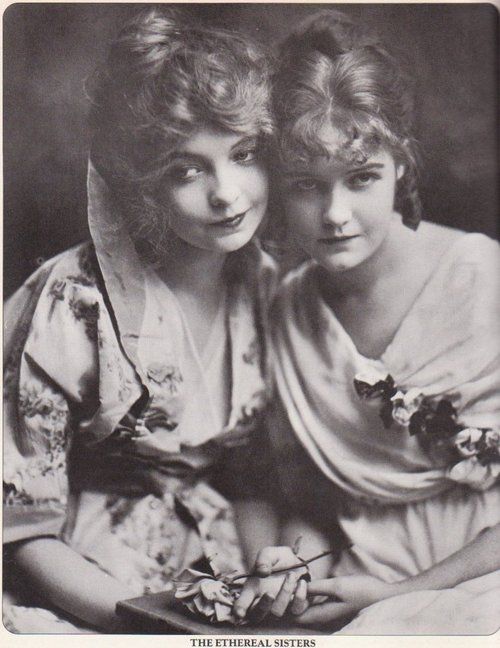
Lillian Gish and Dorothy Gish, c. 1920
SHOW NOTES:
Sources:
This episode is a response to, and includes a brief excerpt from, Hollywood Babylon by Kenneth Anger.
The Parade's Gone Past past Kevin Brownlow
Lillian Gish: Her Legend, Her Life by Charles Affron
D.Westward. Griffith: An American Life by Richard Schickel
Sunshine And Shadow by Mary Pickford
Wally: The Truthful Wallace Reid Story by David W. Menefee
Silent Stars by Jeanine Basinger
"From Movie to Masterpiece" by Denison Clift, Oakland Tribune, April 28 1918, Folio 18
Music:
Original music was composed for this episode by Evan Viola. Most of the rest of music used in this episode, with the exception of the intro and outro, was sourced from royalty-free music libraries and licensed music collections. The intro includes a clip from the pic Casablanca. The outro vocal this week is "Sister Similar You" by The Auteurs.
Excerpts from the following songs were used throughout the episode:
Black and White Memories iii - Martin Hall
Say It Is So - Magnus Ringblom
The Old House - Håkan Eriksson
Bedchamber String Stone - Håkan Eriksson
Sophisticated Gentlemen - Magnus Ringblom
The Smoke Room - Gunnar Johnsén
Jazz and Blue Pianoforte one - Jonaton Jarpehag
Finkelstein'south Walk in the Rain - Per-Anders Nilsson
Credits:
Our special guest this week is TS Faull, who read from Hollywood Babylon. TS final appeared on You Must Remember This episode 49 in our "Charles Manson'south Hollywood" flavor, in which he played Kenneth Anger.
This episode was written, narrated and produced by Karina Longworth.
Editors: Sam Dingman and Jacob Smith.
Inquiry and production assistant: Lindsey D. Schoenholtz.
Social media assistant: Brendan Whalen.
Logo design: Teddy Blanks

Kenneth Acrimony on the set of Lucifer Rising, 1970
Bela and Boris Archive /

The original Hollywood Dracula and Frankenstein, Bela Lugosi and Boris Karloff were 2 heart-aged, strange, struggling actors who became huge stars thanks to a wave of monster movie hits released past Universal Studios during the 1930s. This flavor, we hash out their parallel but very different lives and careers.
Episodes:
-
WHERE THE MONSTERS CAME FROM : In the first episode of the season, we start by exploring where each human came from, what they were doing before they got to Universal, and why Universal began making monster movies in the commencement place. Listen
-
BELA AND THE VAMPIRES : With Dracula (1931), Bela Lugosi instantly became the showtime horror star of sound movie house. Information technology'due south not piece of cake being a trailblazer, and Bela would have difficulty capitalizing on his newfound distinction. In this episode, we'll talk over how Dracula made him, and trapped him, and trace the subsequent vampire roles that became his breadstuff and butter. Listen
-
BORIS AND THE MONSTERS : After twenty years as a journeyman player/laborer, Boris Karloff became an instant superstar as the Monster in Frankenstein (1931). Today we'll explore how Karloff, unlike Lugosi, managed to maintain a steady stardom throughout the decades, returning to the monster that fabricated him without feeling trapped past the character. Featuring Patton Oswalt as Boris Karloff. Listen
-
BELA VS. BORIS : Lugosi and Karloff, the two stars made by Universal's monster movies, made eight films together. Today nosotros'll dive deep into some of these movies (including The Black Cat, The Raven, Son of Frankenstein and Val Lewton's The Body Snatcher), and keep to explore how fifty-fifty when their careers brought them together, Karloff and Lugosi remained worlds apart. Featuring Patton Oswalt as Boris Karloff and Taran Killam as Bela Lugosi. Mind
-
BELA LUGOSI AND ED Forest : Forgotten by Hollywood, struggling with morphine addiction and a dependency on alcohol, at the end of his life Bela Lugosi was welcomed into a ragtag bunch of micro-budget moving picture-making freaks led by Edward D. Wood Jr,, who would after go known as the worst filmmaker of all time. Through their collaborations on movies like Glen or Glenda? and Bride of the Monster, did Ed Wood help Bela, exploit him, or a trivial of both? Featuring Taran Killam as Bela Lugosi and Noah Segan as Ed Wood. Listen
-
BORIS KARLOFF AND ROGER CORMAN :Where Bela Lugosi lived his terminal decade in pitiful obscurity, Boris Karloff worked until the very end of his life, even equally his trunk began to fall apart. Some of that work was for Roger Corman, the extremely prolific contained genre film producer whose movies helped to ascertain the generation gap in the 1960's, while serving as a preparation footing for the side by side generation of auteurs. Karloff's and Corman'southward finest collaboration, Peter Bogdanovich's directorial debut Targets, would serve equally a span between cinematica eras, paying tribute to Karloff and his long career while depicting events that were shockingly of-the-moment--and still relevant today. Featuring Patton Oswalt as Boris Karloff and Rian Johnson as Roger Corman.Listen
Bela and Boris Episode 6: Boris Karloff and Roger Corman /
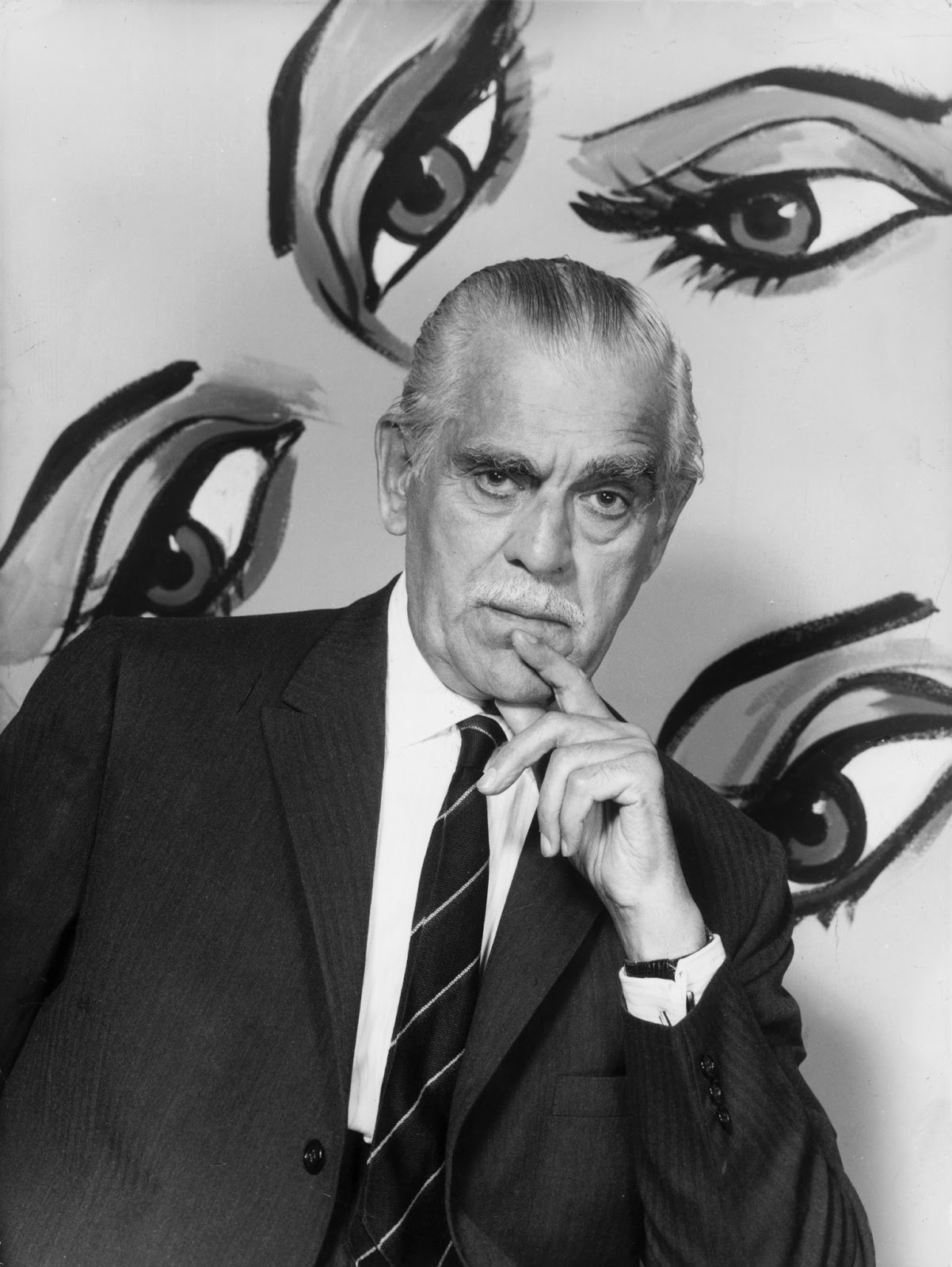
Listen to this episode on Apple Podcasts.
Where Bela Lugosi lived his final decade in lamentable obscurity, Boris Karloff worked until the very terminate of his life, even as his body began to fall apart. Some of that work was for Roger Corman, the extremely prolific independent genre film producer whose movies helped to ascertain the generation gap in the 1960's, while serving as a training ground for the next generation of auteurs. Karloff's and Corman'due south finest collaboration, Peter Bogdanovich's directorial debut Targets, would serve equally a bridge betwixt cinematica eras, paying tribute to Karloff and his long career while depicting events that were shockingly of-the-moment--and still relevant today. Featuring Patton Oswalt as Boris Karloff and Rian Johnson as Roger Corman.
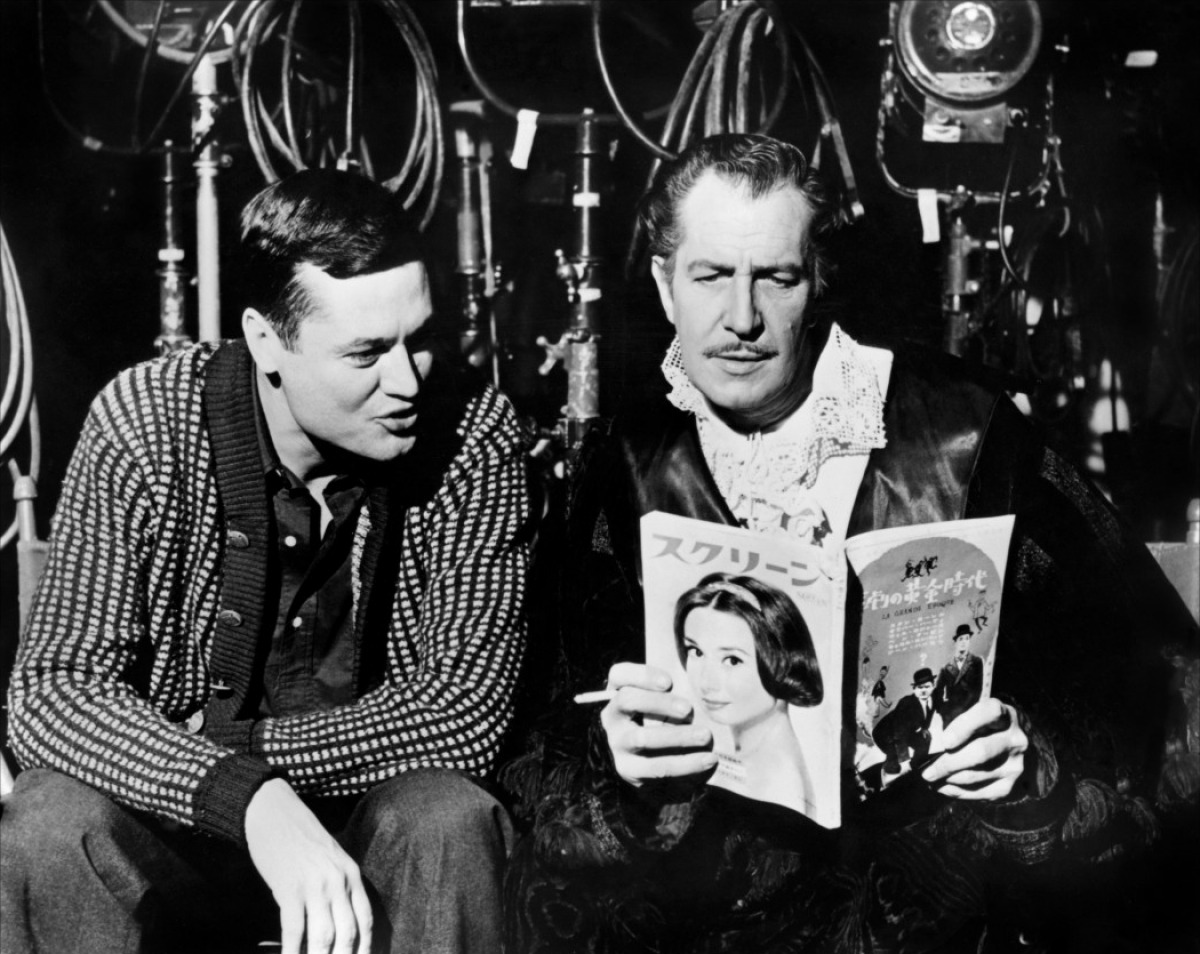
Director Roger Corman with Vincent Price on the set of The House of Conductor, 1960

Boris Karloff in The Raven, 1963

Boris Karloff recording How the Grinch Stole Christmas, 1966
SHOW NOTES:
Sources:
The Moguls: Hollywood'due south Merchants of Myth by Norman J. Zierold
Silent Stars by Jeanine Basinger
A History of Horror past Wheeler Winston Dixon
Universal Horrors: The Studio'southward Classic Films, 1931–1946, 2d Ed. Past Tom Weaver, Michael Brunas and Tom Brunas
Tome of Terror: Horror Films of the 1930s by Christopher Workman and Troy Howarth
Metropolis of Dreams: The Making and Remaking of Universal Pictures past Bernard F. Dick
Universal Studios Monsters: A Legacy of Horror by Michael Mallory
Bela Lugosi and Boris Karloff: The Expanded Story of a Haunting Collaboration, with a Complete Filmography of Their Films Together by Gregory William Mank
Piece of cake Riders, Raging Bulls by Peter Biskind
Who the Hell'due south in Information technology: Conversations with Hollywood's Legendary Actors by Peter Bogdanovich
Roger Corman: Interviews (Conversations with Filmmakers Series) edited by Constantine Nasr
Roger Corman: Blood-Sucking Vampires, Mankind-Eating Cockroaches, and Driller Killers past Beverly Gray
"A Bucket of Blood" by David Kalat, TCM.com
Music:
All of the music used in this episode, with the exception of the intro and outro, is from royalty-gratis music libraries and licensed music collections. The intro includes a clip from the pic Casablanca. Outro song "Weird Science" by Oingo Boingo. Excerpts from the following songs were used throughout the episode: "Flit For Cello 1" by Jonatan Järpehag, "The Hipcat Swagger 3" past Martin Landh, "The Chairman of the Board five" by Martin Landh, "Bachelor on the Movement 1" by Martin Landh, "Bandit Trip the light fantastic toe" by Håkan Eriksson, "Bandit Dance three" by Håkan Eriksson, "Optical Delusion v" by Håkan Eriksson, "Wave Billow" by Henrik Andersson, "Hot Rod Rebels ii" by Victor Olsson, "Psychedelic Groundwork 2" past Merlean, "Bad Guy Budgeted by Merlean, "Psychological Drama four" by Marcus Ringblom, "Polka Dots" by Håkan Eriksson.
Sponsors:
This episode is sponsored by Winc.
Credits:
This episode was edited past Sam Dingman and Jacob Smith, and produced by Karina Longworth with the assistance of Lindsey D. Schoenholtz. Featuring Patton Oswalt every bit Boris Karloff and Rian Johnson as Roger Corman. Our logo was designed past Teddy Blanks.

Boris Karloff in Targets, 1968
Bela and Boris Episode 5: Bela Lugosi and Ed Wood /
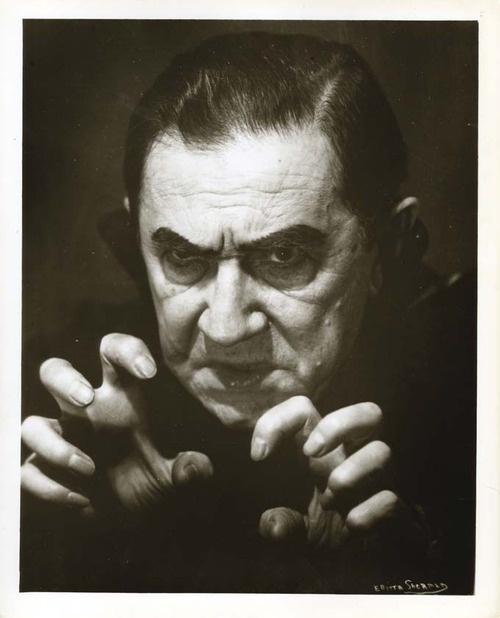
Listen to this episode on Apple Podcasts.
Forgotten by Hollywood, struggling with morphine addiction and a dependency on alcohol, at the end of his life Bela Lugosi was welcomed into a rag tag agglomeration of micro-upkeep picture-making freaks led by Edward D. Wood Jr,, who would afterwards become known as the worst filmmaker of all time. Through their collaborations on movies like Glen or Glenda? and Helpmate of the Monster, did Ed Wood aid Bela, exploit him, or a little of both? Featuring Taran Killam as Bela Lugosi and Noah Segan as Ed Forest.

Bela Lugosi during a 1950'southward stage show.
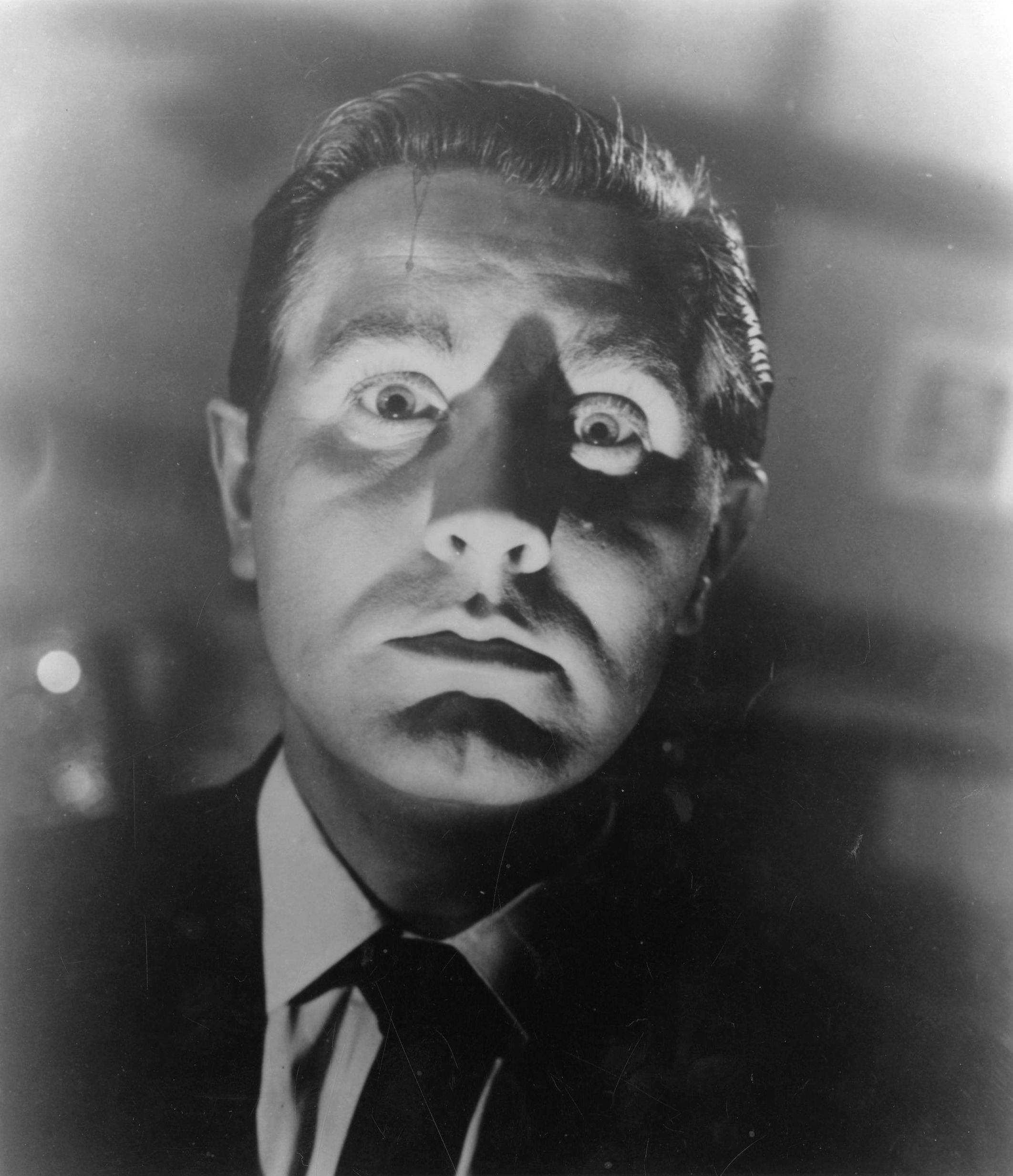
Edward D. Forest Jr. (Ed Wood) c. 1950's

Bela Lugosi, Glen or Glenda?, 1953

Show NOTES:
Sources:
The Moguls: Hollywood's Merchants of Myth by Norman J. Zierold
The Immortal Count: The Life and Films of Bela Lugosi by Arthur Lennig
Silent Stars by Jeanine Basinger
A History of Horror by Wheeler Winston Dixon
Universal Horrors: The Studio's Archetype Films, 1931–1946, 2d Ed. By Tom Weaver, Michael Brunas and Tom Brunas
Tome of Terror: Horror Films of the 1930s past Christopher Workman and Troy Howarth
City of Dreams: The Making and Remaking of Universal Pictures by Bernard F. Dick
Universal Studios Monsters: A Legacy of Horror by Michael Mallory
Lois Weber in Early Hollywood past Shelley Postage stamp
Bela Lugosi and Boris Karloff: The Expanded Story of a Haunting Collaboration, with a Consummate Filmography of Their Films Together by Gregory William Mank
Ed Wood: Nightmare of Ecstasy by Rudolph Grey
Music:
All of the music used in this episode, with the exception of the intro and outro, is from royalty-free music libraries and licensed music collections. The intro includes a clip from the film Casablanca. Outro song: "Bela Lugosi's Dead" by Bauhaus. Excerpts from the following songs were used throughout the episode: "Waltz For Cello 1" by Jonatan Järpehag, "Mystery Minute 1" by Anders Ekengren, "Mercy Of The Wind 1" past Peter Sandberg, "Mercy Of The Wind five" past Peter Sandberg, "Optical Delusion 3" by Håkan Eriksson, "Some Autumn Flit ane" by Jonatan Järpehag,
"Eccentric Vibes 4" by Håkan Eriksson, "Reflectif" (artist unknown), "At The Riviera i" by Peter Sandberg, "Gagool" by Kevin MacLeod, "Etude No 3 For String Quartet" by Peter Sandberg,
Sponsors:
This episode is sponsored by Squarespaceand Blue Apron.
Credits:
This episode was edited by Sam Dingman and Jacob Smith, and produced by Karina Longworth with the help of Lindsey D. Schoenholtz. Featuring Taran Killam as Bela Lugosi and Noah Segan every bit Ed Wood. Our logo was designed past Teddy Blanks.

Bela Lugosi, 1955
Bela and Boris Episode 4: Bela vs. Boris /

Heed to this episode on Apple Podcasts.
Lugosi and Karloff, the two stars made by Universal'southward monster movies, made 8 films together. Today we'll dive deep into some of these movies (including The Black Cat, The Raven, Son of Frankenstein and Val Lewton's The Trunk Snatcher), and continue to explore how fifty-fifty when their careers brought them together, Karloff and Lugosi remained worlds autonomously. Featuring Patton Oswalt every bit Boris Karloff and Taran Killam every bit Bela Lugosi.

Bela Lugosi and Boris Karloff, The Blackness Cat, 1934

Boris Karloff and Bela Lugosi, The Raven, 1935

Boris Karloff and Bela Lugosi, Son of Frankenstein, 1939
SHOW NOTES:
Sources:
The Moguls: Hollywood's Merchants of Myth by Norman J. Zierold
The Immortal Count: The Life and Films of Bela Lugosi by Arthur Lennig
Silent Stars by Jeanine Basinger
A History of Horror by Wheeler Winston Dixon
Universal Horrors: The Studio's Archetype Films, 1931–1946, 2d Ed. By Tom Weaver, Michael Brunas and Tom Brunas
Tome of Terror: Horror Films of the 1930s past Christopher Workman and Troy Howarth
City of Dreams: The Making and Remaking of Universal Pictures by Bernard F. Dick
Universal Studios Monsters: A Legacy of Horror by Michael Mallory
Lois Weber in Early Hollywood by Shelley Stamp
Bela Lugosi and Boris Karloff: The Expanded Story of a Haunting Collaboration, with a Consummate Filmography of Their Films Together past Gregory William Mank
Fearing the Dark: The Val Lewton Career by Edmund K. Bansak
Icons of Grief: Val Lewton's Dwelling Front Pictures by Alexander Nemerov
Val Lewton: The Reality of Terror by Joel E. Siegel
"'The Screen's Number One and Number Ii Bogeymen': The Disquisitional Reception of Boris Karloff and Bela Lugosi in the 1930s and 1940s." by Marking Jancovich and Shane Brown. From Cult Movie Stardom: Offbeat Attractions and Processes of Cultification
"Scare 'Em To Expiry -- and Cash In" by Richard M. Hubler. Saturday Evening Post, May 23, 1942
Music:
All of the music used in this episode, with the exception of the intro and outro, is from royalty-free music libraries and licensed music collections. The intro includes a prune from the film Casablanca. Outro song: "Penthouse and Pavement" by Sky 17. Excerpts from the post-obit songs were used throughout the episode: "Waltz For Cello 1" by Jonatan Järpehag, "Psychological Drama 4" by Magnus Ringblom, "Clumsy Detective 02" by Thomas Lundgren, "Russian Dance Off" past Håkan Eriksson, "Victoria's Vintage Pearls 2" by Peter Sandberg, "Pet Cemetery" by Håkan Eriksson, "Eccentric Vibes 11" past Håkan Eriksson, "Baltic Waltz" by Håkan Eriksson, "Discovery - Blute Solo" past William T. Stromberg from Son of Frankenstein, 1939, "Vampires Suck" past Jon Björk, "Etude No. 3 for String Quartet" past Peter Sandberg, "Reflectif" (Artist unknown), "Some Fall Waltz 1" past Jonatan Järpehag.
Sponsors:
This episode is sponsored past the Great Courses Plus and Squarespace.
Credits:
This episode was edited by Sam Dingman and Jacob Smith, and produced by Karina Longworth with the assistance of Lindsey D. Schoenholtz. Featuring Patton Oswalt as Boris Karloff and Taran Killam equally Bela Lugosi. Our logo was designed past Teddy Blanks.

Bela and Boris Episode 3: Boris and the Monsters /
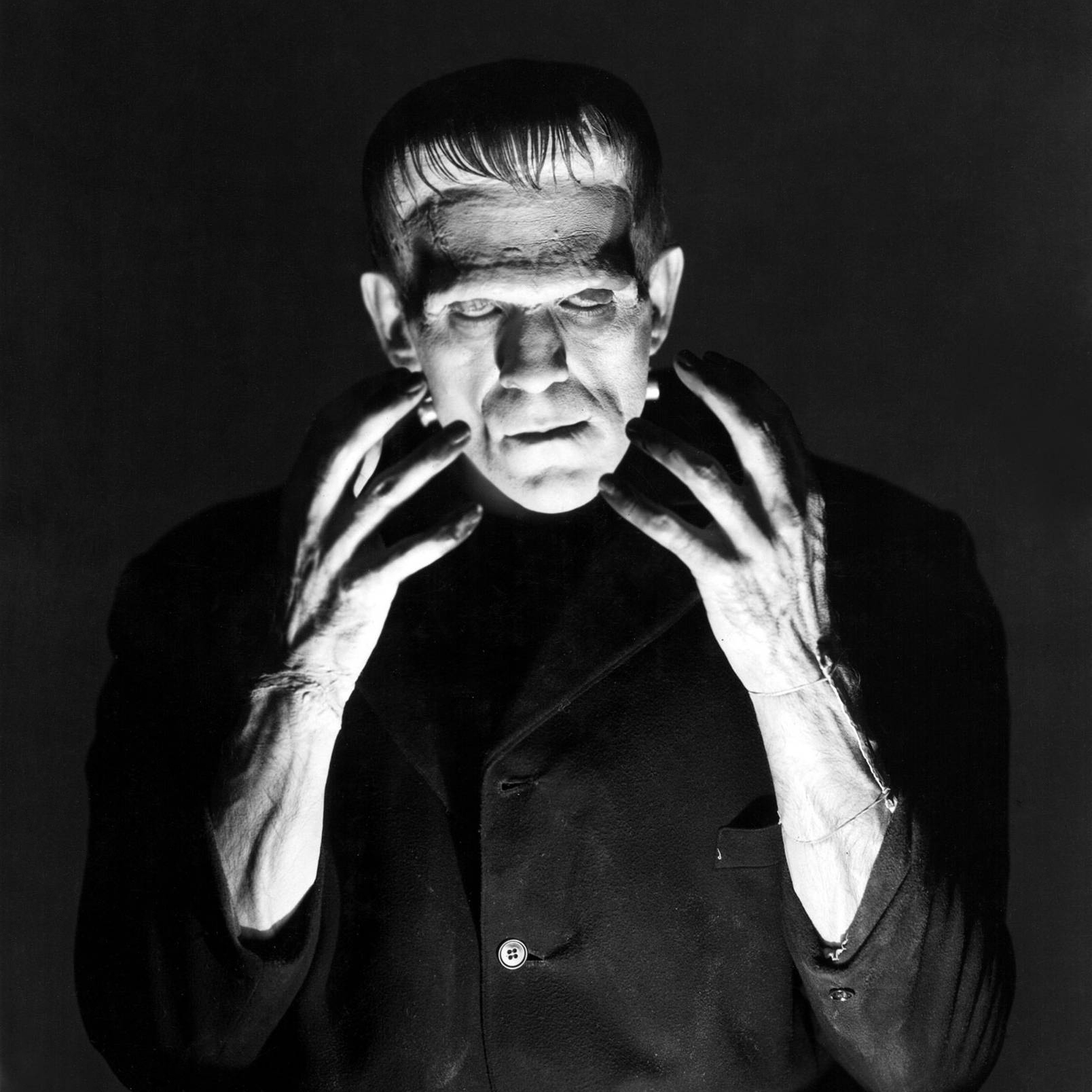
Listen to this episode on Apple Podcasts.
Afterwards xx years as a journeyman role player/laborer, Boris Karloff became an instant superstar as the Monster in Frankenstein (1931). Today we'll explore how Karloff, unlike Lugosi, managed to maintain a steady stardom throughout the decades, returning to the monster that made him without feeling trapped by the grapheme. Featuring Patton Oswalt as Boris Karloff.

Jack P. Pierce preps Boris Karloff's hair and makeup for Frankenstein, 1931

Boris Karloff, The Mummy, 1932

Elsa Lanchester and Boris Karloff in the Bride of Frankenstein, 1935

Evidence NOTES:
Sources:
The Moguls: Hollywood'due south Merchants of Myth by Norman J. Zierold
The Immortal Count: The Life and Films of Bela Lugosi by Arthur Lennig
Silent Stars past Jeanine Basinger
A History of Horror by Wheeler Winston Dixon
Universal Horrors: The Studio's Classic Films, 1931–1946, 2d Ed. By Tom Weaver, Michael Brunas and Tom Brunas
Tome of Terror: Horror Films of the 1930s by Christopher Workman and Troy Howarth
City of Dreams: The Making and Remaking of Universal Pictures by Bernard F. Dick
Universal Studios Monsters: A Legacy of Horror by Michael Mallory
Lois Weber in Early on Hollywood by Shelley Stamp
"Scare 'Em To Death -- and Cash In" by Richard G. Hubler. Sat Evening Post, May 23, 1942
"'The Screen's Number I and Number Two Bogeymen': The Disquisitional Reception of Boris Karloff and Bela Lugosi in the 1930s and 1940s." by Mark Jancovich and Shane Brownish. From Cult Picture show Stardom: Offbeat Attractions and Processes of Cultification
Music:
All of the music used in this episode, with the exception of the intro and outro, is from royalty-free music libraries and licensed music collections. The intro includes a clip from the flick Casablanca. Outro song: "Monster" by Kanye West. Excerpts from the following songs were used throughout the episode: "Waltz for Cello 1" past Jonatan Järpehag, "Stalker" by Gunnar Johnsén, "Surfing Ghouls" past Håkan Eriksson, "Vampires Suck" past John Björk, "Undead Orchestra" by Håkan Eriksson, "Psychological Drama four" by Magnus Ringblom, "Quirky Orchestra 5" past Josef Habib, "Clumsy Detective 02" by Thomas Lundgren, "Clumsy Detective 01" by Thomas Lundgren, "Russian Trip the light fantastic toe Off" by Håkan Eriksson, "Kingdom Of Baghk" by Vusal Zeinalov, "Menuetto And Tempest" by Franz Waxman and Kenneth Alwyn from Helpmate of Frankenstein (1935), "The Tower Explodes and Finale" by Franz Waxman and Kenneth Alwyn from Bride of Frankenstein (1935), "Baltic Waltz" by Håkan Eriksson, "Victoria's Vintage Pearls 2" by Peter Sandberg, "Gagool" by Kevin MacLeod, "Mystery Minute 9" by Anders Ekengren.
Sponsors:
This episode is sponsored by the Great Courses Plus and Blue Apron.
Credits:
This episode was edited by Sam Dingman and Jacob Smith, and produced by Karina Longworth with the assistance of Lindsey D. Schoenholtz. Special thank you to Patton Oswalt who guest stars equally Boris Karloff. Our logo was designed by Teddy Blanks.

Boris Karloff in Frankenstein 1970, 1958
Bela and Boris Episode 2: Bela and the Vampires /
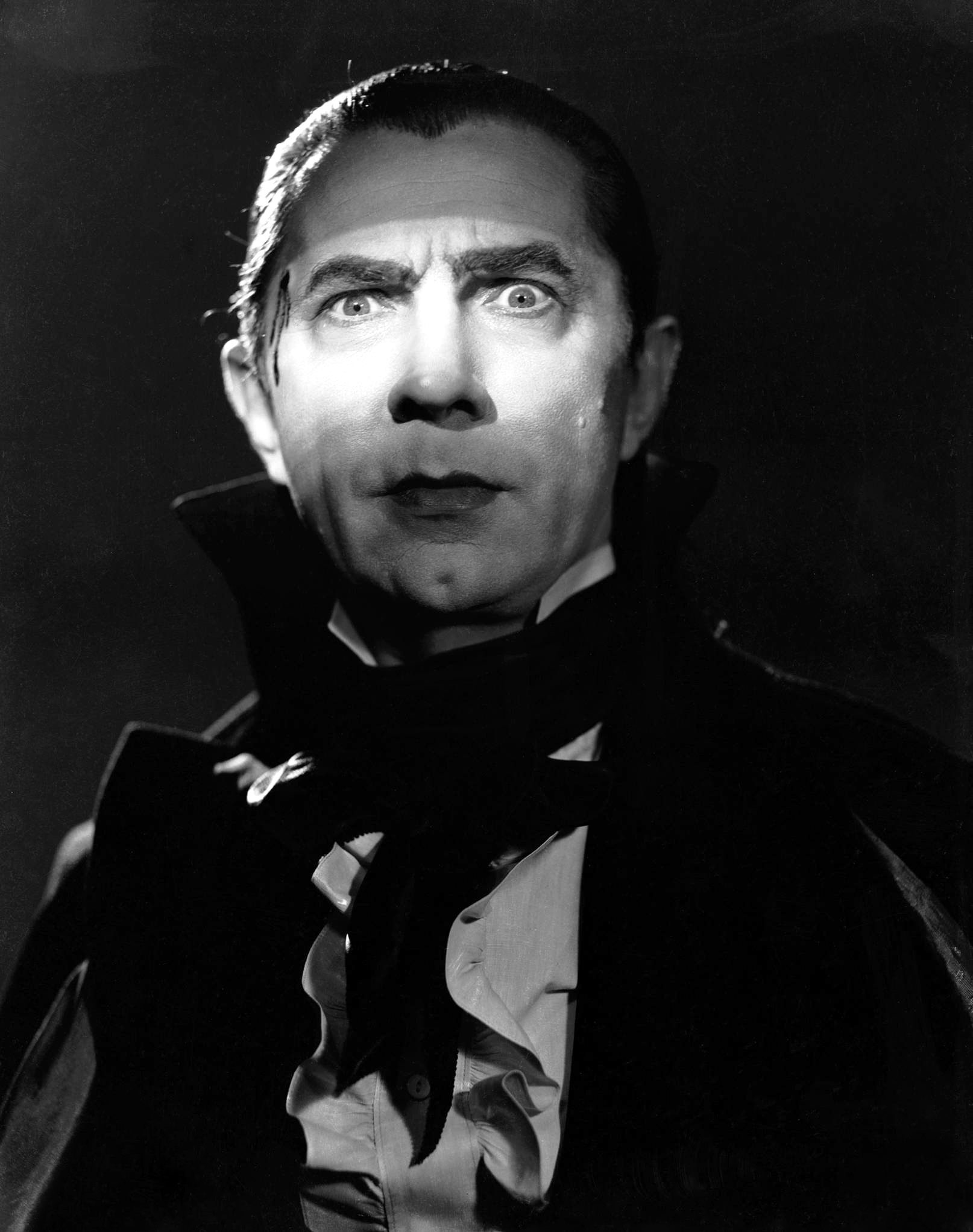
Listen to this episode on Apple Podcasts.
With Dracula (1931), Bela Lugosi instantly became the get-go horror star of audio cinema. It'south not easy beingness a trailblazer, and Bela would accept difficulty capitalizing on his newfound distinction. In this episode nosotros'll discuss how Dracula made him, and trapped him, and trace the subsequent vampire roles that became his bread and butter.

Bela Lugosi, Dracula, 1931

Helen Chandler and Bela Lugosi, Dracula, 1931

Bela Lugosi, White Zombie, 1932

Bela Lugosi, Return of the Vampire, 1943
Prove NOTES:
Sources:
The Moguls: Hollywood's Merchants of Myth by Norman J. Zierold
The Immortal Count: The Life and Films of Bela Lugosi by Arthur Lennig
Silent Stars by Jeanine Basinger
A History of Horror by Wheeler Winston Dixon
Universal Horrors: The Studio's Archetype Films, 1931–1946, 2nd Ed. By Tom Weaver, Michael Brunas and Tom Brunas
Tome of Terror: Horror Films of the 1930s past Christopher Workman and Troy Howarth
Metropolis of Dreams: The Making and Remaking of Universal Pictures by Bernard F. Dick
Universal Studios Monsters: A Legacy of Horror by Michael Mallory
Lois Weber in Early Hollywood by Shelley Stamp
"Scare 'Em To Death -- and Greenbacks In" by Richard G. Hubler. Saturday Evening Post, May 23, 1942
Music:
All of the music used in this episode, with the exception of the intro and outro, is from royalty-free music libraries and licensed music collections. The intro includes a clip from the flick Casablanca. Outro vocal: "Darkness" by The Human League. Excerpts from the post-obit songs were used throughout the episode: "Waltz for Cello ane" by Jonatan Järpehag, "Clumsy Detective 01 and 02" by Thomas Lundgren, "Reflectif" (Artist unknown), "Mystery Minute 5" past Anders Ekengren, "Victoria's Vintage Pearls two" past Peter Sandberg, "Bad Guy Approaching" by Merlean, "Vampires Suck" by Jon Björk, "Chant" (uncredited) from White Zombie (1932), "Russian Dance Off" by Håkan Eriksson, "Some Autumn Waltz 1" past Jonatan Järpehag, "Playful and Slightly Mysterious Orchestral" past Gavin Luke, "Quirky Orchestra 5" by Josed Habib.
Credits:
This episode was edited by Sam Dingman and Jacob Smith, and produced by Karina Longworth with the assistance of Lindsey D. Schoenholtz. Special thanks to Taran Killam who guest stars equally Bela Lugosi. Our logo was designed by Teddy Blanks.
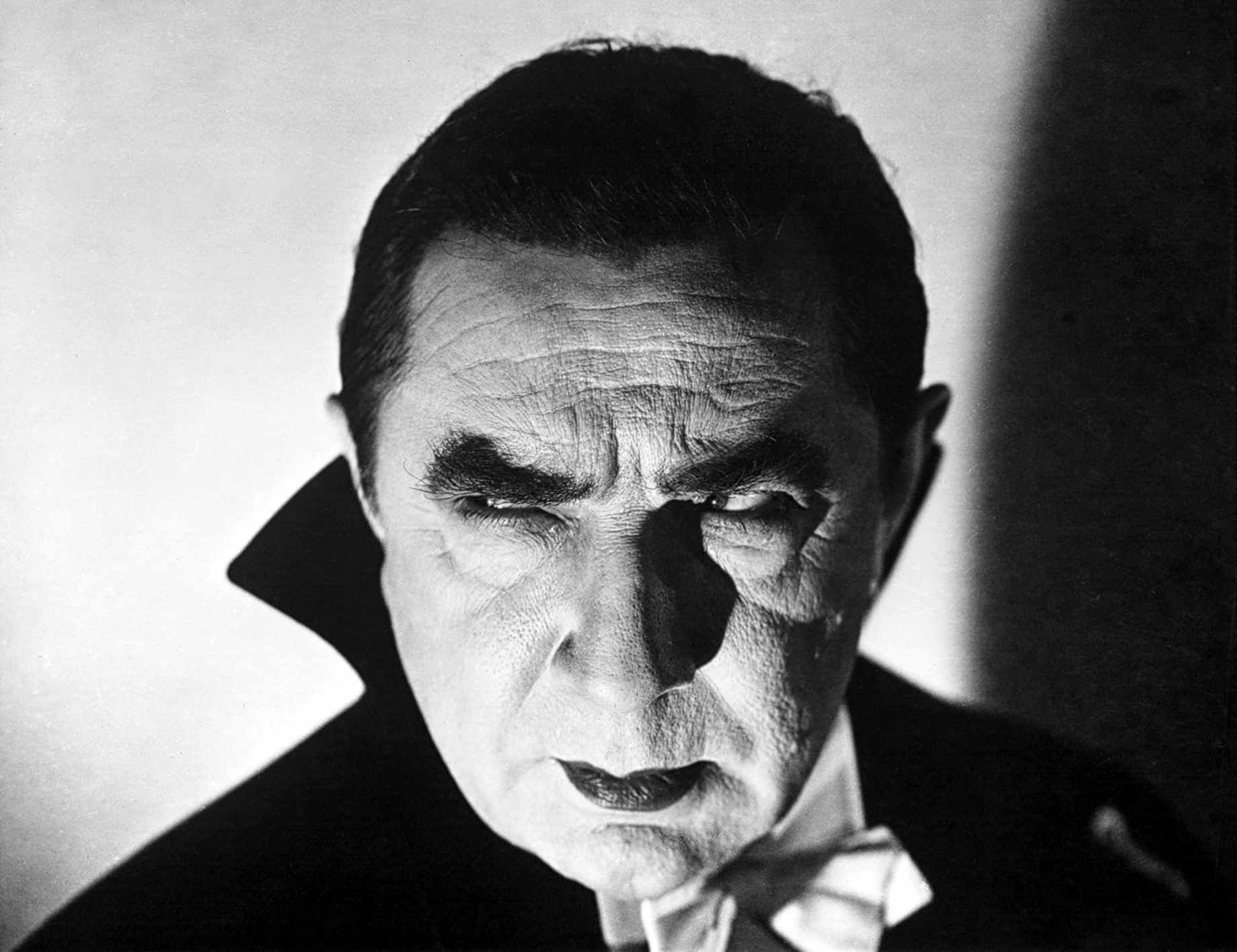
Bela Lugosi, Abbott and Costello Run across Frankenstein, 1948
Bela and Boris Episode 1: Where the Monsters Came From /
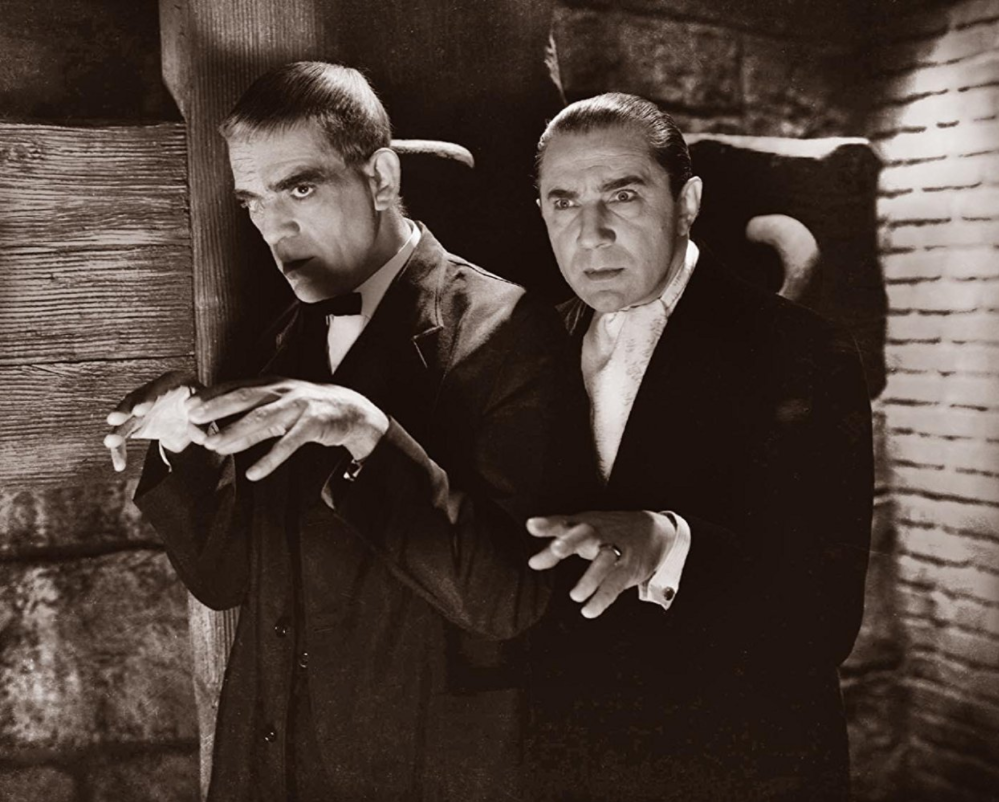
Listen to this episode on Apple tree Podcasts.
Bela Lugosi and Boris Karloff were two heart-aged, foreign, struggling actors who became huge stars thank you to Dracula and Frankenstein, the first two of a tendency of monster movie hits released by Universal Studios during the 1930s. This season, we'll discuss their parallel but very unlike lives and careers. Today, nosotros'll commencement by exploring where each man came from, what they were doing earlier they got to Universal, and why Universal began making monster movies in the get-go place.

Universal City, c. 1915

Carl Laemmle (center) Carl Laemmle Jr. and his sister Rosabelle, c. 1930
SHOW NOTES:
Sources:
The Moguls: Hollywood's Merchants of Myth by Norman J. Zierold
The Immortal Count: The Life and Films of Bela Lugosi past Arthur Lennig
Silent Stars by Jeanine Basinger
A History of Horror by Wheeler Winston Dixon
Universal Horrors: The Studio's Classic Films, 1931–1946, 2nd Ed. By Tom Weaver, Michael Brunas and Tom Brunas
Tome of Terror: Horror Films of the 1930s by Christopher Workman and Troy Howarth
City of Dreams: The Making and Remaking of Universal Pictures by Bernard F. Dick
Universal Studios Monsters: A Legacy of Horror by Michael Mallory
Lois Weber in Early on Hollywood past Shelley Stamp
"Scare 'Em To Death -- and Greenbacks In" by Richard Yard. Hubler. Sabbatum Evening Post, May 23, 1942
Music:
All of the music used in this episode, with the exception of the intro and outro, is from royalty-free music libraries and licensed music collections. The intro includes a clip from the flick Casablanca. Outro song: "Everyday is like Halloween" past Ministry. Excerpts from the post-obit songs were used throughout the episode: "Flit for Cello one" by Jonatan Järpehag, "Russian Trip the light fantastic toe Off " past Håkan Eriksson, "Reflectif" (Artist Unknown), "Kingdom of Baghk" past Vusal Zeinalov, Audio from the film King of Jazz (1930), "Gagool" by Kevin MacLeod, "At the Riviera" by Peter Sandberg, "Some Fall Waltz 1" past Jonatan Järpehag.
Sponsors:
This episode is sponsored by the Great Courses Plus and Blue Frock.
Credits:
This episode was edited by Sam Dingman and Jacob Smith, and produced by Karina Longworth with the assistance of Lindsey D. Schoenholtz. Our logo was designed by Teddy Blanks.

Bela Lugosi, c. 1920's

Boris Karloff, c. 1920's
Jean and Jane Opening Montage Credits /

Last flavor our Jean and Jane opening montage included audio clips from various films, picture show scores and interviews. By popular demand, here is a listing of the intro clip sources. For a full list of films referenced in the Jean and Jane series, or any other episodes in the annal, please cheque out the You Must Remember This Film Society.
Breathless Score past Martial Solal, 1960
Barbarella Theme by Bob Crewe and Charles Fox, 1968
"I don't know if I'm unhappy because I'k not free, or if I'm not free considering I'thousand unhappy." Jean Seberg, Breathless,1960
Jean and Jane Archive /
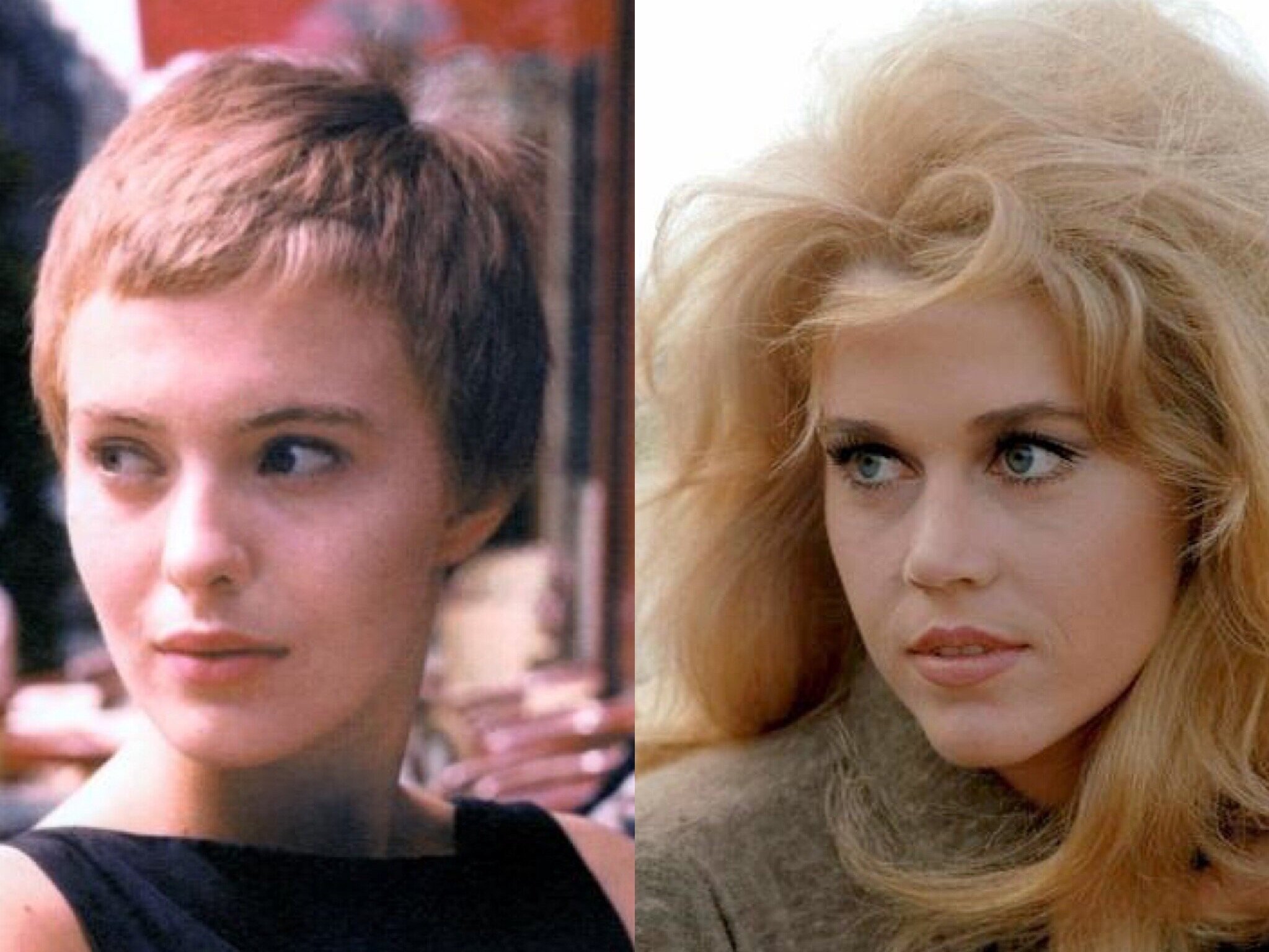
Jane Fonda and Jean Seberg, two white American actresses who began their careers at the tail finish of the Classical Hollywood studio system, found great success (and husbands) in France before boldly and controversially lending their celebrity to causes like ceremonious rights and the anti-state of war motion. Fonda and Seberg were both tracked past the FBI during the Nixon administration, which considered both actresses to exist threats to national security. But for all their similarities, Jane and Jean would end up on different paths.
Episodes:
-
HOLLYWOOD ROYALTY/Center-AMERICAN MARTYR: In the first episode of the flavour, we rail Jane's difficult upbringing with her famous but absentee father and troubled female parent, and the path of privilege -- and tragedy -- that led her to the Actor's Studio. Meanwhile, in small town, church building-dominated Iowa, Jean Seberg announced herself every bit the town rebel at historic period 14 when she joined the NAACP. 3 years later on, she was plucked out of obscurity by a mad genius picture show director to star in ane of the highest-profile Hollywood movies of the tardily-50s. Listen
-
JEAN AND OTTO PREMINGER/JANE IN NEW YORK : Jean Seberg made her first two films, Saint Joan and Bonjour Tristesse, for director Otto Preminger, a tyrannical svengali character whose methods would traumatize Jean for the rest of her life and career. No wonder she rebelled against this bad dad effigy past marrying a handsome French opportunist. Meanwhile, Jane Fonda moves to New York, joins the Actors Studio, takes up with her own hyper-controlling male partner, and tries to define herself as something other than Henry Fonda's daughter. Mind
-
JEAN AND JANE IN PARIS : With her Hollywood career already something of a thwarting, Jean Seberg took a chance on a French picture critic turned starting time-time director who wanted her to play an amoral American in an experimental pic without a script. The outcome was Breathless, the catalyzing hit of the French New Moving ridge and the movie that would make Jean Seberg an icon. Soon thereafter, Jane Fonda got her own invitation to come up make a movie in Paris, where she'd soon autumn in dear with Roger Vadim, the man who discovered Brigitte Bardot. Jane Fonda would become Vadim's new creative muse, as well every bit his third married woman. Mind
-
JEAN VS. LILITH : Having left her husband to exist the mistress of writer/diplomat Romain Gary, Jean secretly gave nascence to a son, and and then made the moving-picture show that she thought would prove herself equally an actress in one case and for all. In Lilith, Seberg would get all in on her portrayal of madness -- perhaps besides deep. After a disastrous collaboration with Gary, Jean happily accustomed an offering to star in a big budget Hollywood musical. But it was 1969, the studio arrangement had crumbled, and that musical -- Paint Your Wagon -- would go a symbol of everything that was wrong with the Hollywood establishment. Mind
-
JANE VS. BARBARELLA : Having coaxed Jane into participating in an open matrimony, Vadim began casting her in films as a male fantasy of female sexual liberation. This phase of her career would acme with Barbarella, a sci-fi moving-picture show based on an erotic comic book featuring Jane equally a horny space warrior. Jane's perfect body was on full display and fetishized the world over, simply no i knew the self-destruction that went on backside the scenes in social club to maintain her looks. While Vadim was building her up as an international sex kitten, Jane was gradually condign more socially conscious. For all of his experience with women, Roger Vadim didn't know what to do with a woke wife. Listen
-
JEAN AND JANE Go PUBLIC ENEMIES : On the heels of making her biggest Hollywood movies in years, Jean Seberg becomes involved with ii black radicals, one a cousin of Malcolm X who spouted violent, anti-white rhetoric, the other a leader of the Black Panthers. Jean starts offer money and support to these men and their causes, which attracts the attending of the FBI. Meanwhile, Jane leaves Vadim -- and Hollywood -- to discover herself as a political activist, working on behalf of American Indians, the Black Panthers, and Vietnam veterans. Despite all her best efforts, Jane hadn't however alienated Hollywood -- while she was being watched past the FBI, Jane starred in one of the peachy surveillance thrillers of the 1970s, Klute. Mind
-
HANOI JANE AND THE FBI VS. JEAN SEBERG'S BABY : After shooting a film with a much-inverse Jean-Luc Godard, Jane Fonda travels to Vietnam, where she naively participates in a stunt that would get out her branded "Hanoi Jane" for decades. The earth media had a field mean solar day mocking her, the US government ready to work plotting to destroy her, and Jane would seek refuge in a new relationship with activist-turned-politician Tom Hayden. Meanwhile, in the midst of divorcing Romain Gary, Jean found herself pregnant. Having wiretapped a phone call between Jean and a Black Panther about her pregnancy, the FBI decided to "neutralize" both Seberg and her unborn child. Listen
-
COMING HOME : Jean buries her child in Iowa, and so returns to Paris in a fragile mental state. Increasingly plagued by both justifiable paranoia and delusions, she makes her last significant films (including another misguided collaboration with Romain Gary), and another attempt at marriage. Back in the States, Jane subsumes her passion for activism into her new marriage to Tom Hayden, and works to get her film career back on rails past producing commercial however socially conscious vehicles in which she can star in. One of these films, Coming Dwelling, would become both an anti-war and feminist landmark, and would win Jane another Oscar. Listen
-
THE Last OF JEAN/JANE WORKS OUT : Jean Seberg, now plagued with mental illness and alcoholism, comes to a tragic end in Paris. Jane Fonda reinvents herself, one time once again, for the 80s. Listen
The Last of Jean/Jane Works Out (Jean and Jane Episode nine) /

Mind to this episode on Apple tree Podcasts.
Jean Seberg, now plagued with mental affliction and alcoholism, comes to a tragic stop in Paris. Jane Fonda reinvents herself, over again, for the 80s.

Jean Seberg with her third husband Dennis Berry, c. 1970'southward

Jean Seberg Les Hautes Solitudes, 1974 | Image via NYTimes & Film Desk

Jon Voight and Jane Fonda at the Academy Awards, 1979

Lily Tomlin, Dolly Parton and Jane Fonda 9 to 5, 1980

Katharine Hepburn, Henry Fonda and Jane Fonda On Golden Swimming, 1981
SHOW NOTES:
Sources:
Played Out: The Jean Seberg Story by David Richards
Incoherent by Garry McGee
My Life So Far by Jane Fonda
Jane Fonda: The Private Life of a Public Woman by Patricia Bosworth
"The Vietnam Oscars" past Peter Biskind, Vanity Fair, March, 2008
"A Conversation with Philippe Garrel" by Vadim Rizov, Jan 13, 2016, filmmakermagazine.com
"A Showbiz Saint Grows Up or Whatever Happened to Jean Seberg" by Bart Mills, June 16, 1974
"Review: 'Les Hautes Solitudes,' the Silent Sides of Jean Seberg (Mostly)" by Manohla Dargis, February 23, 2017
Music:
All of the music used in this episode, with the exception of the intro and outro, is from royalty-complimentary music libraries and licensed music collections. The intro includes a clip from the film Casablanca. Outro song: "Message of Love" past The Pretenders. Excerpts from the following songs were used throughout the episode: "Meet Me In Queens 2" by Orjan Karlsson, "Grit i" by Emil Axelsson, "My Island three" past Jonatan Järpehag, "Quantum Jazz" by Chris MacLeod, "Devil'southward Coulee 1" past Håkan Eriksson, "Groovy Evolution" by Christian Andersen, "The Diary" by Johannes Bornlof, "Into the Earth 4" past Gunnar Johnsen, "Drop World 6" by Niklas Ahlström, "Salty Breeze 1" by Martin Gauffin, "Readers Exercise You Read" by Chris Zabriskie, "Out of the Skies Under the Earth" by Chris Zabriskie, "My Island 2" by Jonatan Järpehag.
Sponsors:
This episode is sponsored past American Express and Naturebox and Great Courses Plus.
Credits:
This episode was edited past Sam Dingman, and produced by Karina Longworth with the assistance of Lindsey D. Schoenholtz. Our logo was designed past Teddy Blanks.

Coming Dwelling (Jean and Jane Episode viii) /

Mind to this episode on Apple Podcasts.
Jean buries her kid in Iowa, and then returns to Paris in a delicate mental state. Increasingly plagued past both justifiable paranoia and delusions, she makes her terminal pregnant films (including another misguided collaboration with Romain Gary), and another attempt at marriage. Back in the States, Jane subsumes her passion for activism into her new marriage to Tom Hayden, and works to go her movie career back on rails by producing commercial nevertheless socially witting vehicles in which she tin can star in. I of these films, Coming Abode, would go both an anti-war and feminist landmark, and would win Jane another Oscar.


Jean Seberg and Dennis Drupe at the Last Tango in Paris premiere, 1972

Jane Fonda, Tom Hayden and their son Troy Garity, Santa Monica, c. 1975

Jon Voight and Jane Fonda, Coming Home, 1978
Testify NOTES:
Sources:
Played Out: The Jean Seberg Story past David Richards
Incoherent by Garry McGee
A Gustation of Ability: A Blackness Woman'due south Story by Elaine Brown
My Life And so Far by Jane Fonda
Jane Fonda: The Private Life of a Public Woman past Patricia Bosworth
Jane Fonda'due south State of war: A Political Biography Of An Antiwar Icon by Mary Hershberger
"Barbarella Goes Radical" past Susan McLeland, from the book Headline Hollywood: A Century of Motion picture Scandal edited by Adrienne L. McLean and David A Melt
"About New York" by John Korry, The New York Times, March 27, 1974
"The Vietnam Oscars" by Peter Biskind, Vanity Off-white, March, 2008
"Romain Gary, Who Says He Wants Peace and Placidity, Stirs Storm With Hollywood Memoir" past John L. Hess, The New York Times, April 27, 1970
Functioning Last Patrol directed by Frank Cavestani.
Music:
All of the music used in this episode, with the exception of the intro and outro, is from royalty-free music libraries and licensed music collections. The intro includes a clip from the film Casablanca. Outro song: "Ecstasy" by PJ Harvey. Excerpts from the post-obit songs were used throughout the episode: "See Me in Queens 2" past Orjan Karlsson, "Easy Lynch Guitars one" by Johan Hynynen, "Earthbound 1" by Joachim Nilsson, "Salty Breeze", "Earthbound 1" past Joachim Nilsson, "Tomorrow I'll Be Gone" past Franz Gordon, "Easy Lynch Guitars ii" by Johan Hynynen, "Modern "Vintage Gypsy two" by Gavin Luke, "Devils Canyon 1" by Håkan Eriksson, "Song For Johanna" by Franz Gordon, "Mediterranean Mix 10" by Stefan Netsman, "Swell Evolution" by Christian Andersen, "Musique a la Carte v" by John Ahlin, "Last Exit To Earth" by Håkan Eriksson, "A Trace Of Light two" by Magnus Ringblom, "I Need to Start Writing Things Down" by Chris Zabriskie.
Sponsors:
This episode is sponsored by Audible, American Limited and Winc.
Credits:
This episode was edited by Sam Dingman, and produced by Karina Longworth with the assistance of Lindsey D. Schoenholtz. Our logo was designed by Teddy Blanks.

Hanoi Jane and the FBI vs. Jean Seberg's Baby (Jean and Jane Episode 7) /

Mind to this episode on Apple Podcasts.
After shooting a film with a much-inverse Jean-Luc Godard, Jane Fonda travels to Vietnam, where she naively participates in a stunt that would leave her branded "Hanoi Jane" for decades. The world media had a field day mocking her, the Usa authorities prepare to work plotting to destroy her, and Jane would seek refuge in a new relationship with activist-turned-politician Tom Hayden. Meanwhile, in the midst of divorcing Romain Gary, Jean found herself pregnant. Having wiretapped a phone call between Jean and a Blackness Panther about her pregnancy, the FBI decided to "neutralize" both Seberg and her unborn kid.

Jane Fonda and Donald Sutherland during a F.T.A. performance, 1971

Jane Fonda accepts her Academy Award for Best Actress, 1972

Jane Fonda during her 1972 visit to Hanoi, North Vietnam

Jean Seberg and David Janssen, Macho Callahan, 1970

Bear witness NOTES:
Sources:
Played Out: The Jean Seberg Story by David Richards
Incoherent by Garry McGee
A Taste of Power: A Black Woman'southward Story by Elaine Brown
My Story by Jane Fonda
Jane Fonda: The Private Life of a Public Adult female by Patricia Bosworth
Jane Fonda's War: A Political Biography Of An Antiwar Icon past Mary Hershberger
"Barbarella Goes Radical" past Susan McLeland from the book Headline Hollywood: A Century of Film Scandal edited by Adrienne L. McLean and David A Cook
"The Authorized Version : How I Vicious in Love With Jane" past Tom Hayden, Los Angeles Times, May five, 1988
"Total think" by John Patterson, TheGuardian.com, September 2, 2005
"The Truth Almost My Trip To Hanoi" by Jane Fonda, JaneFonda.com, July 22, 2011
Music:
All of the music used in this episode, with the exception of the intro and outro, is from royalty-complimentary music libraries and licensed music collections. The intro includes a clip from the flick Casablanca. Outro song: "A Fault" by Fiona Apple. Excerpts from the following songs were used throughout the episode: "Meet Me in Queens two" by Orjan Karlsson, "Piece of cake Lynch Guitars one" by Johan Hynynen, "EarthBound 1" by Joachim Nilsson, "Salty Breeze", "Earthbound 1" by Joachim Nilsson, "Tomorrow I'll Exist Gone" past Franz Gordon, "Piece of cake Lynch Guitars two" by Johan Hynynen, "Modern Vintage Gypsy 2" by Gavin Luke, "Devils Canyon 1" by Håkan Eriksson, "Vocal For Johanna" by Franz Gordon, "Mediterranean Mix 10" past Stefan Netsman, "Groovy Evolution" past Christian Andersen, "Musique a la Carte five" past John Ahlin, "Concluding Exit To Earth" by Håkan Eriksson, "A Trace Of Light ii" by Magnus Ringblom, "I Need to Beginning Writing Things Down" past Chris Zabriskie.
Sponsors:
This episode is sponsored past The Corking Courses Plus and American Express.
Credits:
This episode was edited past Sam Dingman, and produced past Karina Longworth with the assistance of Lindsey D. Schoenholtz. Our logo was designed by Teddy Blanks.
Source: https://www.youmustrememberthispodcast.com/episodes?offset=1534823970473
Posting Komentar untuk "Art of a Pastry Chef 1 Peter Sandberg"